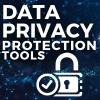Data Science Tips For Beginners - The Ultimate Guide

Blog Post
In this comprehensive guide, you will learn all there is to know about data science and how it can be used to help your business achieve its goals. From understanding the basics of data science to getting started with data analysis, you will be able to achieve the desired results in a shorter amount of time. #TWN
Data science is a hot topic right now, and there’s no doubt that it’s an essential tool for businesses of all sizes. Whether you’re looking to increase your website traffic, analyze customer behavior or crunch numbers for your business analysis, data science is a vital skill set. However, if you’re just starting, it can be difficult to understand the basics of data science. That’s why we’ve created this guide for beginners. In this guide, we will teach you how to read and analyze data, how to use machine learning algorithms to achieve results, and how to create beautiful models that can help you answer questions and make decisions.
What is Data Science?
Data science is the process of transforming data into insights that can help businesses achieve their goals. It’s a vital skill set for anyone looking to grow their business, and it’s especially important for startups who are just starting. By understanding the basics of data science, you can start creating powerful models that will help you answer questions and make decisions.
How can Data Science Help us?
Data science can help us in several ways. For example, it can help us increase website traffic. By understanding the behavior of your customers, you can create more targeted ads that are more effective at reaching your target audience. Additionally, by using data science algorithms, we can achieve stunning results in the areas of business analysis and machine learning.
Databases and Data Science
Databases are essential for data science. A database stores information in a specific format and can be used to store data of any type. Common databases include MySQL, MongoDB, RDBMS, and Cassandra.
Since data science is all about understanding and manipulating data, it’s important to have a good understanding of the different types of databases.
The Basics of Data Analysis
First and foremost, understanding the basics of data science is essential for any business.
So, what are the basics of data analysis? Well, in simple terms, data analysis is the process of understanding and manipulating data to produce insights or predictions. It’s important to remember that data science is not a one-time event; it’s an ongoing process that you will need to keep up with as your business grows.
How to Use Machine Learning Algorithms to Get Results
Machine learning algorithms are a type of artificial intelligence that can be used to achieve results. Machine learning algorithms are used to help you understand and answer questions about data. They can be used to analyze data to figure out what is happening, and they can be used to create beautiful models that can help you answer questions and make decisions.
For example, let’s say you want to know how many people visit your website. You could use a machine-learning algorithm to analyze the data and find out how frequently people visit your website. You could use this information to create a model that predicts how often people will visit your website in the future. This model could tell you how many visits your website will get in the next month, for example.
Data Science Applications
There are many data science applications that businesses can use. The list of applications below is just a small sample.
- Fraud and Risk Detection
- Healthcare
- Internet Search
- Targeted Advertising
- Website Recommendations
- Advanced Image Recognition
- Speech Recognition
- Airline Route Planning
Also Read: How to Use AI and Machine Learning to Enhance Your Business
Challenges in Data Science
Many challenges come with data science. For example, it can be difficult to understand how data is organized and how it can be used to achieve results. Additionally, data science can be time-consuming and require a lot of effort.
Business Intelligence vs. Data Science
When it comes to data science, business intelligence (BI) is the most popular term. BI is the process of understanding and extracting meaning from data. BI can be used to answer questions such as:
- What are the best ways to grow your business?
- What are the most important factors affecting customer loyalty?
- How can you improve your website’s search engine ranking?
- What are some potential risks associated with data collection and analysis?
Data Science Technologies, Techniques, and Methods
Machine learning algorithms depend heavily on data. Data science relies on machine learning to find patterns and insights in large data sets. Machine learning algorithms use a variety of supervised, unsupervised, semi-supervised, and reinforcement-learning methods to learn more about the data set and understand how it can be used for profit or research.
There are two main types of data science: deep learning and artificial intelligence. Deep learning is a more advanced offshoot of machine learning which primarily uses artificial neural networks to analyze large sets of unlabeled data.
Predictive modeling is another core data science technology. It uses machine learning, data mining, or statistical algorithms to predict the likely outcome of events or behavior. Doing so makes the process of analyzing and understanding this information more manageable and less time-consuming.
Data Science Tools and Platforms
Numerous tools are available for data scientists to use in the analytics process.
- data platforms and analytics engines, such as Spark, Hadoop, and NoSQL databases;
- programming languages, such as Python, R, Julia, Scala, and SQL;
- statistical analysis tools like SAS and IBM SPSS;
- machine-learning platforms and libraries, including TensorFlow, Weka, Scikit-learn, Keras, and PyTorch;
- Jupyter Notebook, a web application for sharing documents with code, equations, and other information; and
- data visualization tools and libraries, such as Tableau, D3.js, and Matplotlib.
Also Read: Understanding the Importance of Business Intelligence
Data Science Tips
Here are some Data Science Tips that you must follow:
- Start Anywhere—But Start
- Pick Up a Programming Language
- Practice the Fundamentals
- Learn the Tools
- Level Up Your Soft Skills
Data Science Course at OdinSchool. Acquire the most in-demand skills to propel your career in Data Science. Learn the distribution and real-time analysis of data by applying Statistics. Tackle Big Data with PySpark using distributed computing. Perform Statistical analysis, data visualization, and prediction using Python. Use SQL to manipulate databases. Launch your career in Data Science. Transition to the in-demand field of Data Science. Upgrade your skill set for your career growth. Re-enter the workforce after your career break. Explore Job opportunities currently available for Data Science.
Conclusion
To achieve success in data science, you will need to have a strong understanding of the basics and be well-versed in various mathematical and computer programming languages. Furthermore, you should also be familiar with state-of-the-art data analysis tools such as machine learning or artificial intelligence (AI).
You May Like
EDITOR’S CHOICE












